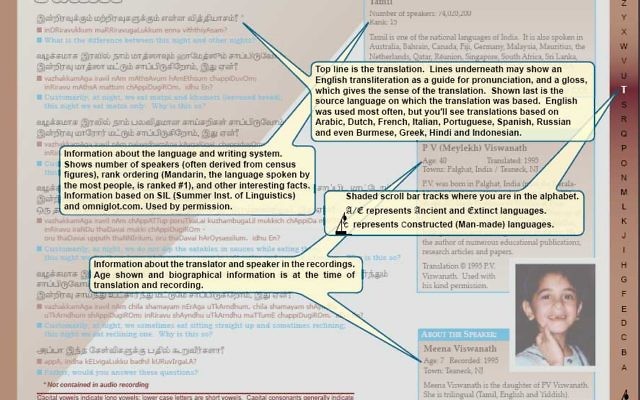More Than a Touch of Yiddish
By R.M. Grossblatt
At the end of the seder, my husband, Jerry, would always sing “Echad Mi Yodea” (“Who Knows One”) in Yiddish (“Mu Asapru”), just as his father and grandfather sang before him.
For the past eight years, since Jerry passed away, my son-in-law has made sure to add that touch of Yiddish to our seder. No matter how tired I am, I always perk up when I hear the Yiddish words mu asapru.

Meena Viswanath, a member of Young Israel of Toco Hills, sings all the songs in Yiddish at her seder.
Because her father is from India, Meena’s seders while she was growing up were partly in Yiddish and partly in Tamil, the language of southern India.
She and her husband, Jamie Conway, will join her family in Teaneck, N.J., for a seder in Yiddish. She said that if she had a seder in Atlanta, she would like to conduct it in Yiddish but probably wouldn’t in deference to English-speaking guests.
When Meena, a civil engineer, met her husband, he showed an interest in learning Yiddish. Now at home they speak to each other and their 10-month-old son only in Yiddish. Meena hasn’t found much of a Yiddish community in Atlanta, but at Young Israel she enjoys speaking with Miriam Udell, who teaches a Yiddish class at Emory.
Although observant, Meena considers herself part of the secular Yiddishist movement, which is devoted to the preservation of the Yiddish language. It’s especially popular with Jewish college students and children of survivors of the Holocaust, she said, explaining that the language brings a feeling of national pride.
The Workmen’s Circle, a big part of the Yiddish world, exhibits this national pride right before Pesach. Meena said the organization holds what is known as a third seder, at which hundreds of people read through the haggadah together in Yiddish.
Meena has a strong connection to the Yiddish language. Her grandfather Mordkhe Schaechter is professor of Yiddish at Columbia University in New York. Her aunt Rukhl Schaechter recently became the first female editor heading the Forverts, the Yiddish version of the national Jewish newspaper known as the Forward.
Growing up, Meena attended a play group and then Sunday school in Yiddish. When she was 8, 9 and 10 years old, she learned Yiddish grammar, practiced reading and writing, and read Yiddish literature.
“There’s a rich literary culture (of Yiddish) in Europe with hundreds of writers,” she said.
When she and her classmates got older, they turned their Yiddish-speaking Sunday school into a choir called Pripetshik. “There are lots of Yiddish songs about Pesach,” she said, “not just the ones at the back of the haggadah, like a song about Moses in the basket going down the Nile.”
Her choir made a DVD singing some of these songs.
In addition to sharing songs about Pesach, Meena told me the title of a book, “300 Ways to Ask the Four Questions.” At my seder, I’m looking forward to hearing my grandchildren recite the Four Questions in Hebrew, Yiddish, Ladino and maybe even Japanese, as they’re taught at Torah Day School of Atlanta.
At the end of the seder, maybe some of them who are still awake will sing “Mu Asapru” along with my son-in-law, just as their beloved grandfather, great-grandfather and great-great-grandfather sang the Yiddish words at their seders.




comments